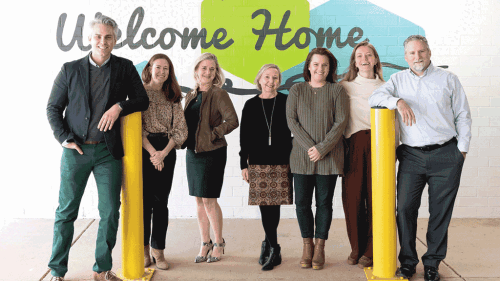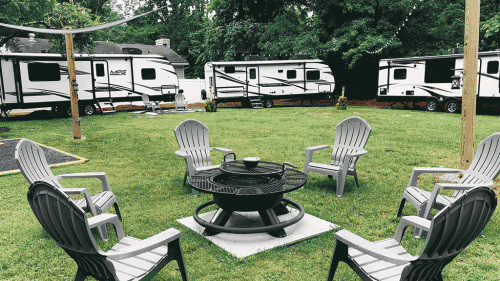While the cost of solar installations has dropped substantially, making it work financially can still be a challenge without a subsidy. A private developer may be eligible for federal, state, and, in some cases, county property tax credits, but that would not work for public housing agencies or a nonprofit developer.
Affordable housing developers in three U.S. cities—Cambridge, Massachusetts; Austin, Texas; and Camden, New Jersey—have been able to get a payback from solar installations by finding partners that made grants or donations or, in one case, took over the installation and maintenance in return for a fixed-price multiyear energy contract. All three were the result of a partnership among developers, nonprofit organizations, and local utilities.
Cambridge: Community Development Group Offers Benefits of Tax Credits
As energy manager of the Cambridge Housing Authority (CHA), Tina Miller’s goal is to look at her buildings’ environmental impact and to save on energy costs. When she started working with Boston Community Capital (BCC) in 2008, it was one of the first organizations in Massachusetts coordinating solar installations on affordable housing. Under a power purchase agreement between BCC and the CHA, BCC paid the full capital cost of installation of the solar photovoltaic systems. The CHA pays a fixed cost per kilowatt-hour over either ten or 20 years, depending on the building and the contract.
“It’s a known cost,” says Miller, “a great inflationary hedge.” The CHA is saving $25,000 a year on electricity costs and 340 metric tons [375 million tons] in carbon offset in the four multiunit buildings where solar was installed. BCC does the maintenance and so far, Miller said, there haven’t been any problems.”
As the housing authority does retrofits, it makes sure the roofs are solar-ready. But in an old city like Cambridge, it is not easy to find usable land in an unshaded area for new construction, Miller says. Other criteria for adding solar are structural viability, the age of the rooftop, access to the roof (interior access is preferable), and the ability to connect to the utility infrastructure.
In the Boston area, BCC plays a critical role in connecting affordable housing developers with utilities and offering the advantages of tax credits that developers may not be able to access. Affordable housing developers do not have the expertise in energy management that is necessary to install solar, work with the utility on metering, and deal with finance, technology, and structural needs, says DeWitt Jones, president of BCC Solar Energy Advantage.
Back in 2007, Massachusetts was looking for proposals to use the state’s solar rebate money for affordable housing. That is when BCC created Solar Energy Advantage to work with affordable housing developers so they could benefit from the solar tax credit. Now BCC owns a series of solar systems on roofs of the housing developments, leases them to the developers, and sells them electricity.
“A lot of affordable housing groups don’t have a cushion,” says Jones. “If fuel prices go up, property owners may have to cut other things, like residents’ support services, to pay the utility bills. They can’t raise rents easily. They’re going to be more sensitive to volatility.”
Do cities in cooler climes have enough sun for solar energy? The solar tools that predict how much sunlight an area will get have improved, Jones says. “We project over the course of a year, we’ll generate 1,000 kilowatt-hours because of daylight, time of day, weather patterns. We have always generated more than what we expected in 12 months—even last winter, with all the snow.”
Austin: Designing New Solar Buildings with Austin Energy’s help
In Austin, any project built under the city’s affordable housing program that uses municipal affordable bond money has to meet particular green building requirements. So an incentive for solar is built in. Several years ago, Mark Rogers, executive director of the Guadalupe Neighborhood Development Corporation (GNDC), approached Austin Energy’s Green Building Program about building new affordable housing with solar roofs.
The result, after a two-year design process, was a design for a mix of detached single-family houses, duplexes, and multifamily rowhouses. Landscape architects and engineering firms donated their services or worked for greatly reduced rates, says John Umphress, green building and sustainability consultant for Austin Energy. The designers had to lay out the buildings in a way that maximized solar exposure and worked around some big, mature trees on the property and a water feature running through the center. The city paid for solar installations.
Four duplexes have been built so far and have been occupied since September 2013. In each, the ground floor is owned and operated by the GNDC, which rents it to seniors, and the upper floor is owned by the Jeremiah Program, which rents it to single parents. They are designed as net-zero-energy buildings, with the aim of putting as much energy into the grid as they take out.
The ground-floor units are creating enough savings from solar electricity that the GNDC has a surplus, which it uses to offset the cost of other utilities such as trash and water, says Cassandra Ramirez of the GNDC. Savings are not as great as those achieved on the upper floors, likely because families with children use more electricity than seniors.
“We realized [that] no matter how efficiently you build residential units, occupant behavior is a huge determinant in how much energy you’ll use,” says Austin Energy’s Umphress. He encourages the GNDC and the Jeremiah Program to educate occupants about energy use. When tenants do not see the utility bills because the cost is included in the rent, they don’t have much incentive to conserve, he adds.
Camden: Partnership with Solar Advocacy Group
In Camden, solar systems have been put on single-family homes that were rehabilitated for low-income families with sweat equity from volunteers. The Camden Community Development Corporation approached GRID Tri-State, the New York–New Jersey–Pennsylvania office of GRID Alternatives, which works to get solar power to low-income single-family homes. GRID uses a barn-raising model that trains volunteers to do solar installations, meeting a triple goal of job training, energy savings, and a reduction in greenhouse gas emissions.
GRID Tri-State has worked with several affordable housing groups. One of them, NeighborWorks America, gave $150,000 to its member organizations that wanted to work with GRID, says Kate Shackford, GRID Tri-State’s executive director. One of those was St. Joseph’s Carpenter Society, a nonprofit group that rehabilitates old houses and sells them to low-income people.
Combining the $2,500 grant from NeighborWorks with a $2,500 grant from local utility PSE&G, St. Joesph’s paid GRID $5,000 to outfit a single-family home with solar electricity as a pilot test case. The total cost of a solar installation ranges from $17,000 to $20,000, depending on size, Shackford says. GRID makes up the difference with donations from solar energy companies such as Sun Edison and Sun Power. GRID trains groups of volunteers to do the solar installations.
When the solar installation was added to the first house, “the main thing we were concerned about was the integrity of the roof,” says Pilar Hogan, executive director of St. Joseph’s. Solar installations have been put on three houses so far, so recently that they have not yet switched to solar. (GRID needs to see the cost of conventional electricity for a couple of months for comparison before switching a house to solar.) Three more houses in the community are planned for solar.
GRID will be the contact point for homeowners if they have any questions about solar installations. The group guarantees 50 percent savings starting from the first day if occupants do not increase their energy use, Shackford says. With some conservation measures, they can see 75 to 80 percent savings.







